STM8L052C6T6 Features, Specifications and Applications
32KB 32K x 8 FLASH STM8 8-Bit Microcontroller STM8L EnergyLite Series STM8L 48 Pin 16MHz 3V 48-LQFP









32KB 32K x 8 FLASH STM8 8-Bit Microcontroller STM8L EnergyLite Series STM8L 48 Pin 16MHz 3V 48-LQFP
Reviewing the STM8L052C6T6 microcontroller: ultra-low power, 12-bit ADC, and versatile interfaces make it ideal for IoT, wearables, and industrial systems.
Product Introduction
When designing embedded systems, you often need a microcontroller that balances power efficiency with performance. The STM8L052C6T6 stands out as an excellent choice for such scenarios. It delivers ultra-low power consumption, making it ideal for battery-powered devices. Its robust feature set, including advanced peripherals and connectivity options, offers the flexibility to meet diverse application needs. Whether you're building IoT devices or wearable technology, this microcontroller provides the reliability and precision you require.
With the STM8L052C6T6, you can create smarter, more efficient designs that perform exceptionally well in power-sensitive environments.
STM8L052C6T6 Features and Specifications
Core Technical Specifications
The STM8L052C6T6 is built around an 8-bit STM8 core, offering reliable performance for embedded systems. Its CPU operates at a frequency of up to 16 MHz, ensuring smooth processing for various applications. With 32 KB of Flash memory, 2 KB of SRAM, and 1 KB of EEPROM, you gain ample storage for code and data.
This microcontroller supports an operating voltage range of 1.8 V to 3.6 V, making it compatible with low-power designs. Its ultra-low power consumption is a standout feature, with modes like Active-halt consuming as little as 1.3 μA and Halt mode requiring just 350 nA. These specifications make it ideal for battery-powered devices and energy-sensitive applications.
Tip: The STM8L052C6T6's low-power modes allow you to extend battery life significantly, especially in IoT and wearable devices.
Here’s a quick overview of its technical specifications:
| Specification | Details |
|---|---|
| Operating Voltage | 1.8 V to 3.6 V |
| Temperature Range | -40 °C to 85 °C |
| Low-Power Modes | Wait, Low-power run (5.1 μA), Low-power wait (3 μA), Active-halt (1.3 μA), Halt (350 nA) |
| Consumption | 195 μA/MHz + 440 μA |
| Ultra-low Leakage | 50 nA per I/O |
| Max Frequency | 16 MHz |
| Flash Memory | 32 KB |
| RAM | 2 KB |
| ADC | 12-bit up to 1 Msps/25 channels |
| Communication Interfaces | SPI, I2C, USART |
| Timers | Two 16-bit timers, one 8-bit timer |
| I/O Pins | Up to 41 I/Os |
| Development Support | Fast on-chip programming, SWIM debugging |
Integrated Peripherals
The STM8L052C6T6 comes equipped with a range of integrated peripherals that enhance its functionality. Its 12-bit ADC supports up to 20 channels, enabling precise analog signal measurement. This feature is particularly useful for applications requiring accurate data, such as medical devices and industrial control systems.
You’ll also find multiple communication interfaces, including I2C, UART, SPI, and LIN. These interfaces simplify integration with sensors, modules, and other components, making your design process more efficient. Additionally, the microcontroller includes timers—two 16-bit and one 8-bit—offering flexible options for time-sensitive operations.
Note: The STM8L052C6T6’s robust peripheral set ensures seamless operation in complex embedded systems, even in harsh industrial environments.
Connectivity Options
Connectivity is a key strength of the STM8L052C6T6. It supports SPI, I2C, and USART communication protocols, allowing you to connect it to a wide range of devices. Whether you’re interfacing with sensors, actuators, or external modules, this microcontroller provides the flexibility you need.
Its I/O pins, up to 41 in total, offer extensive options for input and output operations. These pins are designed with ultra-low leakage (50 nA per I/O), ensuring minimal power loss during operation. This feature is particularly beneficial for applications where energy efficiency is critical.
Tip: Use the STM8L052C6T6’s connectivity features to build scalable and efficient systems for IoT, home automation, and industrial applications.
STM8L052C6T6 Performance Analysis
Power Efficiency
Power efficiency is one of the STM8L052C6T6’s strongest attributes. Its ultra-low power consumption makes it ideal for battery-powered devices and energy-sensitive applications. You can rely on this microcontroller to extend battery life without compromising performance.
The STM8L052C6T6 offers multiple low-power modes, such as Active-halt and Halt, which consume as little as 1.3 μA and 350 nA, respectively. These modes allow you to optimize energy usage based on your application’s requirements. For example, in IoT devices that spend most of their time idle, these modes significantly reduce power draw.
When compared to other microcontrollers like the ATmega328P, the STM8L052C6T6 demonstrates superior power efficiency. Here’s a quick comparison:
| Feature | STM8L052C6T6 | ATmega328P |
|---|---|---|
| Power Consumption | Lower | Higher |
| ADC Resolution | 12-bit | 10-bit |
Tip: Use the STM8L052C6T6’s low-power modes to design devices that last longer on a single charge, especially for wearables and IoT sensors.
Processing Speed
The STM8L052C6T6 delivers reliable processing speed with its 16 MHz CPU frequency. While it may not match the speed of higher-end microcontrollers, it provides sufficient performance for most embedded applications. You can use it for tasks like data acquisition, signal processing, and communication without experiencing delays.
Its 12-bit ADC further enhances processing capabilities by enabling faster and more accurate analog-to-digital conversions. This feature is particularly useful in applications requiring real-time data, such as medical monitoring devices or industrial sensors.
Note: The STM8L052C6T6 balances processing speed with power efficiency, ensuring smooth operation without draining energy reserves.
Reliability in Embedded Applications
Reliability is crucial in embedded systems, and the STM8L052C6T6 excels in this area. Its robust design and wide operating temperature range (-40 °C to 85 °C) make it suitable for harsh environments. Whether you’re developing industrial automation systems or automotive applications, this microcontroller ensures consistent performance.
The STM8L052C6T6’s ultra-low leakage I/O pins (50 nA per I/O) contribute to its reliability by minimizing power loss during operation. Additionally, its integrated peripherals, such as timers and communication interfaces, simplify system design and reduce the risk of errors.
Tip: Choose the STM8L052C6T6 for applications requiring long-term reliability and stable performance, even under challenging conditions.
Development with STM8L052C6T6
Available Development Tools
When working with the STM8L052C6T6, you have access to a variety of development tools that simplify the design process. The ST Visual Develop (STVD) and ST Visual Programmer (STVP) are two essential software tools. These allow you to write, debug, and program your applications efficiently. Both tools integrate seamlessly with the microcontroller, ensuring a smooth development experience.
For hardware debugging, the ST-LINK/V2 is a reliable option. It supports in-circuit debugging and programming, making it easier to test your designs in real time. Additionally, the STM8L Discovery Kit provides a hands-on platform for prototyping. This kit includes an onboard debugger and pre-configured peripherals, helping you quickly test your ideas.
Tip: Use the STM8L Discovery Kit to experiment with the microcontroller’s features before moving to a custom PCB design.
Documentation and Community Support
The STM8L052C6T6 is backed by extensive documentation. The official datasheet and reference manual provide detailed information about its features, registers, and programming guidelines. These resources are invaluable when you need to understand the microcontroller’s inner workings.
You’ll also find a supportive community of developers online. Platforms like the ST Community Forum and GitHub host discussions, code examples, and troubleshooting tips. These resources can help you overcome challenges and learn from others’ experiences.
Note: Bookmark the official STMicroelectronics website for the latest updates, tools, and documentation.
Learning Curve for Beginners
If you’re new to microcontrollers, the STM8L052C6T6 offers a manageable learning curve. Its 8-bit architecture is simpler than more advanced 32-bit systems, making it a great starting point. The availability of user-friendly tools like STVD and STVP further reduces the complexity of getting started.
To accelerate your learning, explore online tutorials and example projects. Many of these resources guide you step-by-step, from setting up your development environment to creating your first application. With consistent practice, you’ll quickly gain confidence in using this microcontroller.
Tip: Start with basic projects, such as blinking an LED or reading a sensor, to build a strong foundation.
Applications of STM8L052C6T6
IoT Devices
The STM8L052C6T6 is a perfect fit for IoT devices due to its low power consumption and versatile features. You can use its ultra-low power modes, such as Low-power run (5.1 μA) and Active-halt (1.3 μA), to extend battery life in devices like smart sensors and home automation systems. Its fast wakeup time of 4.7 μs ensures quick responsiveness, which is essential for IoT applications that require real-time data processing.
This microcontroller’s integrated 12-bit ADC and multiple communication interfaces, including I2C, SPI, and UART, make it easy to connect with sensors and transmit data efficiently. Its wide operating temperature range (-40 °C to +85 °C) ensures reliable performance in various environments, from indoor smart homes to outdoor industrial IoT setups.
Here’s a quick overview of its features for IoT applications:
| Feature | Details |
|---|---|
| Core | 8-bit STM8 core with a clock rate of up to 16 MHz |
| Memory | 32 KB Flash, 2 KB SRAM, 1 KB EEPROM |
| ADC | Integrated 12-bit ADC with multiple channels |
| GPIO | Up to 38 general-purpose ports |
| Communication Interfaces | I2C, SPI, UART, IrDA |
| Power Saving Modes | Low Power Run, Low Power Sleep, Active-Halt |
| Operating Voltage | 1.8 V to 3.6 V |
| Applications | IoT devices, battery-powered devices, automation systems |
Tip: Use the STM8L052C6T6’s GPIO and communication interfaces to create scalable IoT systems that adapt to your needs.
Wearable Technology
Wearable devices demand compact, energy-efficient microcontrollers, and the STM8L052C6T6 delivers on both fronts. Its ultra-low power modes allow you to design wearables that last longer on a single charge. For example, fitness trackers and health monitors can benefit from its low-power sleep mode, which consumes just 3 μA.
The microcontroller’s built-in PWM modules and 12-bit ADC enable precise control and accurate data measurement. These features are ideal for applications like heart rate monitoring or motion tracking. Its small size and low operating voltage (1.8 V to 3.6 V) make it easy to integrate into compact wearable designs.
Note: The STM8L052C6T6’s fast wakeup time ensures wearables respond instantly to user interactions, enhancing the overall user experience.
Industrial Automation
In industrial automation, reliability and performance are critical. The STM8L052C6T6 excels in these areas with its robust design and wide temperature range. You can use it in harsh environments, such as factories or outdoor installations, without worrying about performance degradation.
Its integrated timers and communication interfaces simplify the control of motors, sensors, and actuators. The microcontroller’s ultra-low leakage I/O pins (50 nA per I/O) ensure minimal power loss, even in complex systems. This makes it a great choice for energy-efficient automation solutions.
Tip: Leverage the STM8L052C6T6’s built-in timers to manage precise operations in industrial systems, such as conveyor belts or robotic arms.
Automotive Systems
The STM8L052C6T6 microcontroller offers features that make it highly suitable for automotive systems. Its robust design and wide operating temperature range (-40 °C to 85 °C) ensure reliable performance in challenging environments. Whether you are designing engine control units or in-vehicle infotainment systems, this microcontroller provides the stability and precision you need.
One of its key advantages is its ultra-low power consumption. Automotive applications often require components that can operate efficiently without draining the vehicle's battery. The STM8L052C6T6 achieves this with its low-power modes, such as Active-halt and Halt, which consume as little as 1.3 μA and 350 nA, respectively. These modes allow you to optimize energy usage in systems like tire pressure monitoring or keyless entry.
Its integrated peripherals also enhance its functionality in automotive designs. The 12-bit ADC enables accurate sensor data acquisition, which is essential for applications like airbag deployment systems or fuel monitoring. Additionally, its communication interfaces, including I2C, SPI, and USART, simplify integration with other automotive components. For example, you can use these interfaces to connect the microcontroller to sensors, actuators, or external modules.
Tip: Use the STM8L052C6T6’s timers to manage time-sensitive operations, such as controlling wiper speeds or managing lighting systems.
The microcontroller’s reliability and energy efficiency make it a valuable choice for modern automotive systems. By incorporating it into your designs, you can create smarter, more efficient vehicles that meet the demands of today’s automotive industry.
The STM8L052C6T6 stands out as a reliable choice for embedded systems. Its ultra-low power consumption ensures extended battery life, making it ideal for IoT devices, wearables, and automotive systems. You’ll appreciate its versatile features, such as integrated peripherals and multiple communication interfaces, which simplify complex designs. Its robust performance in harsh environments further enhances its appeal.
For developers, this microcontroller offers excellent value. It combines energy efficiency with functionality, enabling you to create innovative and efficient applications. Whether you’re a beginner or an experienced engineer, the STM8L052C6T6 provides the tools you need to succeed.
FAQ
What makes the STM8L052C6T6 ideal for low-power applications?
Its ultra-low power modes, such as Halt (350 nA) and Active-halt (1.3 μA), minimize energy consumption. These modes extend battery life in devices like IoT sensors and wearables. You can rely on its efficient design to optimize power usage without sacrificing performance.
Can beginners easily learn to use the STM8L052C6T6?
Yes, its 8-bit architecture simplifies learning. Tools like ST Visual Develop (STVD) and ST Visual Programmer (STVP) make programming straightforward. Start with basic projects, such as blinking LEDs, to build confidence. Online tutorials and community forums provide additional support.
How does the STM8L052C6T6 handle harsh environments?
Its wide operating temperature range (-40 °C to 85 °C) ensures reliable performance in extreme conditions. You can use it in industrial automation or automotive systems without worrying about stability. Its robust design adds durability to embedded applications.
What development tools are available for the STM8L052C6T6?
You can use STVD and STVP for software development. For hardware debugging, ST-LINK/V2 offers in-circuit programming and testing. The STM8L Discovery Kit provides a hands-on platform for prototyping, making it easier to experiment with features.
Is the STM8L052C6T6 suitable for IoT devices?
Absolutely! Its low power consumption, fast wakeup time (4.7 μs), and versatile communication interfaces (I2C, SPI, UART) make it perfect for IoT applications. You can connect sensors and transmit data efficiently while ensuring long battery life.
Specifications
- TypeParameter
- Lifecycle Status
Lifecycle Status refers to the current stage of an electronic component in its product life cycle, indicating whether it is active, obsolete, or transitioning between these states. An active status means the component is in production and available for purchase. An obsolete status indicates that the component is no longer being manufactured or supported, and manufacturers typically provide a limited time frame for support. Understanding the lifecycle status is crucial for design engineers to ensure continuity and reliability in their projects.
ACTIVE (Last Updated: 6 months ago) - Factory Lead Time8 Weeks
- Mount
In electronic components, the term "Mount" typically refers to the method or process of physically attaching or fixing a component onto a circuit board or other electronic device. This can involve soldering, adhesive bonding, or other techniques to secure the component in place. The mounting process is crucial for ensuring proper electrical connections and mechanical stability within the electronic system. Different components may have specific mounting requirements based on their size, shape, and function, and manufacturers provide guidelines for proper mounting procedures to ensure optimal performance and reliability of the electronic device.
Surface Mount - Mounting Type
The "Mounting Type" in electronic components refers to the method used to attach or connect a component to a circuit board or other substrate, such as through-hole, surface-mount, or panel mount.
Surface Mount - Package / Case
refers to the protective housing that encases an electronic component, providing mechanical support, electrical connections, and thermal management.
48-LQFP - Number of Pins48
- Data ConvertersA/D 25x12b
- Number of I/Os41
- ROM(word)32768
- Watchdog TimersYes
- Operating Temperature
The operating temperature is the range of ambient temperature within which a power supply, or any other electrical equipment, operate in. This ranges from a minimum operating temperature, to a peak or maximum operating temperature, outside which, the power supply may fail.
-40°C~85°C TA - Packaging
Semiconductor package is a carrier / shell used to contain and cover one or more semiconductor components or integrated circuits. The material of the shell can be metal, plastic, glass or ceramic.
Tray - Series
In electronic components, the "Series" refers to a group of products that share similar characteristics, designs, or functionalities, often produced by the same manufacturer. These components within a series typically have common specifications but may vary in terms of voltage, power, or packaging to meet different application needs. The series name helps identify and differentiate between various product lines within a manufacturer's catalog.
STM8L EnergyLite - Part Status
Parts can have many statuses as they progress through the configuration, analysis, review, and approval stages.
Active - Moisture Sensitivity Level (MSL)
Moisture Sensitivity Level (MSL) is a standardized rating that indicates the susceptibility of electronic components, particularly semiconductors, to moisture-induced damage during storage and the soldering process, defining the allowable exposure time to ambient conditions before they require special handling or baking to prevent failures
3 (168 Hours) - Number of Terminations48
- ECCN Code
An ECCN (Export Control Classification Number) is an alphanumeric code used by the U.S. Bureau of Industry and Security to identify and categorize electronic components and other dual-use items that may require an export license based on their technical characteristics and potential for military use.
EAR99 - Max Power Dissipation
The maximum power that the MOSFET can dissipate continuously under the specified thermal conditions.
288mW - Terminal Position
In electronic components, the term "Terminal Position" refers to the physical location of the connection points on the component where external electrical connections can be made. These connection points, known as terminals, are typically used to attach wires, leads, or other components to the main body of the electronic component. The terminal position is important for ensuring proper connectivity and functionality of the component within a circuit. It is often specified in technical datasheets or component specifications to help designers and engineers understand how to properly integrate the component into their circuit designs.
QUAD - Terminal Form
Occurring at or forming the end of a series, succession, or the like; closing; concluding.
GULL WING - Supply Voltage
Supply voltage refers to the electrical potential difference provided to an electronic component or circuit. It is crucial for the proper operation of devices, as it powers their functions and determines performance characteristics. The supply voltage must be within specified limits to ensure reliability and prevent damage to components. Different electronic devices have specific supply voltage requirements, which can vary widely depending on their design and intended application.
3V - Terminal Pitch
The center distance from one pole to the next.
0.5mm - Frequency
In electronic components, the parameter "Frequency" refers to the rate at which a signal oscillates or cycles within a given period of time. It is typically measured in Hertz (Hz) and represents how many times a signal completes a full cycle in one second. Frequency is a crucial aspect in electronic components as it determines the behavior and performance of various devices such as oscillators, filters, and communication systems. Understanding the frequency characteristics of components is essential for designing and analyzing electronic circuits to ensure proper functionality and compatibility with other components in a system.
16MHz - Base Part Number
The "Base Part Number" (BPN) in electronic components serves a similar purpose to the "Base Product Number." It refers to the primary identifier for a component that captures the essential characteristics shared by a group of similar components. The BPN provides a fundamental way to reference a family or series of components without specifying all the variations and specific details.
STM8L - Pin Count
a count of all of the component leads (or pins)
48 - Supply Voltage-Max (Vsup)
The parameter "Supply Voltage-Max (Vsup)" in electronic components refers to the maximum voltage that can be safely applied to the component without causing damage. It is an important specification to consider when designing or using electronic circuits to ensure the component operates within its safe operating limits. Exceeding the maximum supply voltage can lead to overheating, component failure, or even permanent damage. It is crucial to adhere to the specified maximum supply voltage to ensure the reliable and safe operation of the electronic component.
3.6V - Power Supplies
an electronic circuit that converts the voltage of an alternating current (AC) into a direct current (DC) voltage.?
2/3.3V - Interface
In electronic components, the term "Interface" refers to the point at which two different systems, devices, or components connect and interact with each other. It can involve physical connections such as ports, connectors, or cables, as well as communication protocols and standards that facilitate the exchange of data or signals between the connected entities. The interface serves as a bridge that enables seamless communication and interoperability between different parts of a system or between different systems altogether. Designing a reliable and efficient interface is crucial in ensuring proper functionality and performance of electronic components and systems.
I2C, IrDA, SPI, UART, USART - Memory Size
The memory capacity is the amount of data a device can store at any given time in its memory.
32kB - Oscillator Type
Wien Bridge Oscillator; RC Phase Shift Oscillator; Hartley Oscillator; Voltage Controlled Oscillator; Colpitts Oscillator; Clapp Oscillators; Crystal Oscillators; Armstrong Oscillator.
Internal - RAM Size
RAM size refers to the amount of random access memory (RAM) available in an electronic component, such as a computer or smartphone. RAM is a type of volatile memory that stores data and instructions that are actively being used by the device's processor. The RAM size is typically measured in gigabytes (GB) and determines how much data the device can store and access quickly for processing. A larger RAM size allows for smoother multitasking, faster loading times, and better overall performance of the electronic component. It is an important factor to consider when choosing a device, especially for tasks that require a lot of memory, such as gaming, video editing, or running multiple applications simultaneously.
2K x 8 - Voltage - Supply (Vcc/Vdd)
Voltage - Supply (Vcc/Vdd) is a key parameter in electronic components that specifies the voltage level required for the proper operation of the device. It represents the power supply voltage that needs to be provided to the component for it to function correctly. This parameter is crucial as supplying the component with the correct voltage ensures that it operates within its specified limits and performance characteristics. It is typically expressed in volts (V) and is an essential consideration when designing and using electronic circuits to prevent damage and ensure reliable operation.
1.8V~3.6V - uPs/uCs/Peripheral ICs Type
The parameter "uPs/uCs/Peripheral ICs Type" refers to the classification of various integrated circuits used in electronic devices. It encompasses microprocessors (uPs), microcontrollers (uCs), and peripheral integrated circuits that provide additional functionalities. This classification helps in identifying the specific type of chip used for processing tasks, controlling hardware, or interfacing with other components in a system. Understanding this parameter is essential for selecting the appropriate electronic components for a given application.
MICROCONTROLLER - Core Processor
The term "Core Processor" typically refers to the central processing unit (CPU) of a computer or electronic device. It is the primary component responsible for executing instructions, performing calculations, and managing data within the system. The core processor is often considered the brain of the device, as it controls the overall operation and functionality. It is crucial for determining the speed and performance capabilities of the device, as well as its ability to handle various tasks and applications efficiently. In modern devices, core processors can have multiple cores, allowing for parallel processing and improved multitasking capabilities.
STM8 - Peripherals
In the context of electronic components, "Peripherals" refer to devices or components that are connected to a main system or device to enhance its functionality or provide additional features. These peripherals can include input devices such as keyboards, mice, and touchscreens, as well as output devices like monitors, printers, and speakers. Other examples of peripherals include external storage devices, network adapters, and cameras. Essentially, peripherals are external devices that expand the capabilities of a main electronic system or device.
Brown-out Detect/Reset, DMA, IR, LCD, POR, PWM, WDT - Program Memory Type
Program memory typically refers to flash memory when it is used to hold the program (instructions). Program memory may also refer to a hard drive or solid state drive (SSD). Contrast with data memory.
FLASH - Core Size
Core size in electronic components refers to the physical dimensions of the core material used in devices such as inductors and transformers. The core size directly impacts the performance characteristics of the component, including its inductance, saturation current, and frequency response. A larger core size typically allows for higher power handling capabilities and lower core losses, while a smaller core size may result in a more compact design but with limitations on power handling and efficiency. Designers must carefully select the core size based on the specific requirements of the application to achieve optimal performance and efficiency.
8-Bit - Program Memory Size
Program Memory Size refers to the amount of memory available in an electronic component, such as a microcontroller or microprocessor, that is used to store program instructions. This memory is non-volatile, meaning that the data stored in it is retained even when the power is turned off. The program memory size determines the maximum amount of code that can be stored and executed by the electronic component. It is an important parameter to consider when selecting a component for a specific application, as insufficient program memory size may limit the functionality or performance of the device.
32KB 32K x 8 - Connectivity
In electronic components, "Connectivity" refers to the ability of a component to establish and maintain connections with other components or devices within a circuit. It is a crucial parameter that determines how easily signals can be transmitted between different parts of a circuit. Connectivity can be influenced by factors such as the number of input and output ports, the type of connectors used, and the overall design of the component. Components with good connectivity are essential for ensuring reliable and efficient operation of electronic systems.
I2C, IrDA, SPI, UART/USART - Bit Size
In electronic components, "Bit Size" refers to the number of bits that can be processed or stored by a particular component. A bit is the smallest unit of data in computing and can have a value of either 0 or 1. The Bit Size parameter is commonly used to describe the capacity or performance of components such as microprocessors, memory modules, and data buses. A larger Bit Size generally indicates a higher processing capability or storage capacity, allowing for more complex operations and larger amounts of data to be handled efficiently. It is an important specification to consider when selecting electronic components for specific applications that require certain levels of performance and data processing capabilities.
8 - Has ADC
Has ADC refers to the presence of an Analog-to-Digital Converter (ADC) in an electronic component. An ADC is a crucial component in many electronic devices as it converts analog signals, such as voltage or current, into digital data that can be processed by a digital system. Having an ADC allows the electronic component to interface with analog signals and convert them into a format that can be manipulated and analyzed digitally. This parameter is important for applications where analog signals need to be converted into digital form for further processing or control.
YES - DMA Channels
DMA (Direct Memory Access) Channels are a feature found in electronic components such as microcontrollers, microprocessors, and peripheral devices. DMA Channels allow data to be transferred directly between peripherals and memory without involving the CPU, thereby reducing the burden on the CPU and improving overall system performance. Each DMA Channel is typically assigned to a specific peripheral device or memory region, enabling efficient data transfer operations. The number of DMA Channels available in a system determines the concurrent data transfer capabilities and can vary depending on the specific hardware design. Overall, DMA Channels play a crucial role in optimizing data transfer efficiency and system performance in electronic devices.
YES - Data Bus Width
The data bus width in electronic components refers to the number of bits that can be transferred simultaneously between the processor and memory. It determines the amount of data that can be processed and transferred in a single operation. A wider data bus allows for faster data transfer speeds and improved overall performance of the electronic device. Common data bus widths include 8-bit, 16-bit, 32-bit, and 64-bit, with higher numbers indicating a larger capacity for data transfer. The data bus width is an important specification to consider when evaluating the speed and efficiency of a computer system or other electronic device.
8b - PWM Channels
PWM Channels, or Pulse Width Modulation Channels, refer to the number of independent PWM outputs available in an electronic component, such as a microcontroller or a motor driver. PWM is a technique used to generate analog-like signals by varying the duty cycle of a square wave signal. Each PWM channel can control the output of a specific device or component by adjusting the pulse width of the signal. Having multiple PWM channels allows for precise control of multiple devices simultaneously, making it a valuable feature in applications such as motor control, LED dimming, and audio signal generation. The number of PWM channels available in a component determines the flexibility and complexity of the system it can control.
YES - Number of Timers/Counters4
- EEPROM Size
EEPROM Size refers to the amount of memory capacity available in an Electrically Erasable Programmable Read-Only Memory (EEPROM) chip. This parameter indicates the total storage space in bytes or bits that can be used to store data in a non-volatile manner. The EEPROM size determines the maximum amount of information that can be written, read, and erased from the memory chip. It is an important specification to consider when selecting an EEPROM for a particular application, as it directly impacts the amount of data that can be stored and accessed by the electronic component.
256 x 8 - Number of ADC Channels25
- Max Junction Temperature (Tj)
Max Junction Temperature (Tj) refers to the maximum allowable temperature at the junction of a semiconductor device, such as a transistor or integrated circuit. It is a critical parameter that influences the performance, reliability, and lifespan of the component. Exceeding this temperature can lead to thermal runaway, breakdown, or permanent damage to the device. Proper thermal management is essential to ensure the junction temperature remains within safe operating limits during device operation.
105°C - Ambient Temperature Range High
This varies from person to person, but it is somewhere between 68 and 77 degrees F on average. The temperature setting that is comfortable for an individual may fluctuate with humidity and outside temperature as well. The temperature of an air conditioned room can also be considered ambient temperature.
85°C - Number of SPI Channels1
- Height1.6mm
- Length7.2mm
- Width7.2mm
- Radiation Hardening
Radiation hardening is the process of making electronic components and circuits resistant to damage or malfunction caused by high levels of ionizing radiation, especially for environments in outer space (especially beyond the low Earth orbit), around nuclear reactors and particle accelerators, or during nuclear accidents or nuclear warfare.
No - RoHS Status
RoHS means “Restriction of Certain Hazardous Substances” in the “Hazardous Substances Directive” in electrical and electronic equipment.
ROHS3 Compliant - Lead Free
Lead Free is a term used to describe electronic components that do not contain lead as part of their composition. Lead is a toxic material that can have harmful effects on human health and the environment, so the electronics industry has been moving towards lead-free components to reduce these risks. Lead-free components are typically made using alternative materials such as silver, copper, and tin. Manufacturers must comply with regulations such as the Restriction of Hazardous Substances (RoHS) directive to ensure that their products are lead-free and environmentally friendly.
Lead Free
Parts with Similar Specs
- ImagePart NumberManufacturerPackage / CaseNumber of PinsData Bus WidthNumber of I/OInterfaceMemory SizeSupply VoltagePeripheralsView Compare
STM8L052C6T6
48-LQFP
48
8 b
41
I2C, IrDA, SPI, UART, USART
32 kB
3 V
Brown-out Detect/Reset, DMA, IR, LCD, POR, PWM, WDT
48-LQFP
48
8 b
38
CAN, I2C, IrDA, LIN, SPI, UART, USART
32 kB
5 V
Brown-out Detect/Reset, POR, PWM, WDT
44-LQFP
44
8 b
32
SPI, UART, USART
-
5 V
POR, PWM, WDT
48-LQFP
48
8 b
38
CAN, I2C, IrDA, LIN, SPI, UART, USART
32 kB
5 V
Brown-out Detect/Reset, POR, PWM, WDT
48-LQFP
48
8 b
38
CAN, I2C, IrDA, LIN, SPI, UART, USART
32 kB
5 V
Brown-out Detect/Reset, POR, PWM, WDT
Datasheet PDF
- Datasheets :
 TP4056:A LiPo battery charger IC
TP4056:A LiPo battery charger IC07 March 20222154
 Unveiling the NXP LPC3141/3143 Microcontroller: A Detailed Overview
Unveiling the NXP LPC3141/3143 Microcontroller: A Detailed Overview29 February 2024104
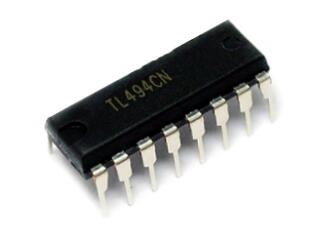 Everything You Need to Know About TL494 Current-Mode PWM Controller
Everything You Need to Know About TL494 Current-Mode PWM Controller19 April 20229984
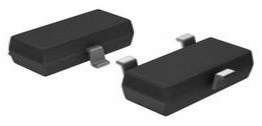 APX803S 3-Pin Microprocessor Reset Circuit: Pinout, Equivalent and Datasheet
APX803S 3-Pin Microprocessor Reset Circuit: Pinout, Equivalent and Datasheet02 March 20221308
 VL53L0X LIDAR Distance Sensor: Pinout, Datasheet, and Applications
VL53L0X LIDAR Distance Sensor: Pinout, Datasheet, and Applications11 September 20212528
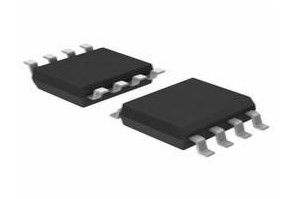 LM301A Operational Amplifier: Pinout, Features and Datasheet
LM301A Operational Amplifier: Pinout, Features and Datasheet08 November 20211471
 TL064 Operational Amplifier: Features, Pinout and Datasheet
TL064 Operational Amplifier: Features, Pinout and Datasheet16 July 20213322
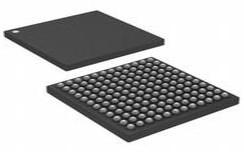 STM32F446 Microcontrollers: Circuit, Pinout, and Datasheet
STM32F446 Microcontrollers: Circuit, Pinout, and Datasheet09 November 20219331
 Working Principles and Applications of Pressure Sensors
Working Principles and Applications of Pressure Sensors07 April 202533966
 A Practical Methodology to Simulate 4H-SiC and GaN p-n Diodes with Model Parameter Adjustment in Medici
A Practical Methodology to Simulate 4H-SiC and GaN p-n Diodes with Model Parameter Adjustment in Medici07 February 20232287
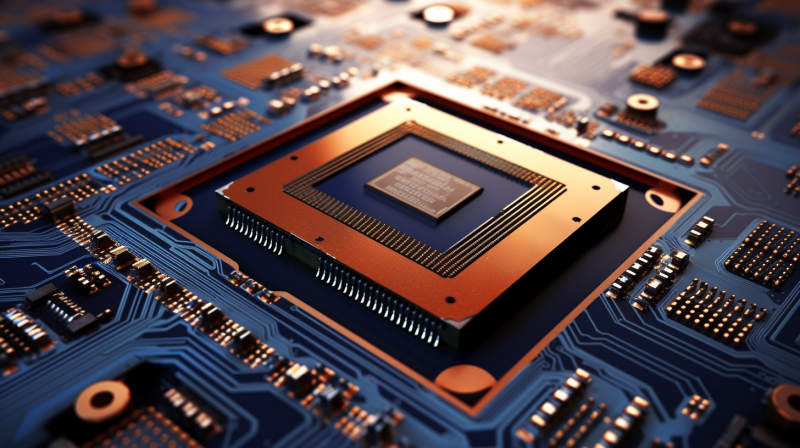 Innovative Changes in Leading-Edge Chip Architectures
Innovative Changes in Leading-Edge Chip Architectures06 September 20231588
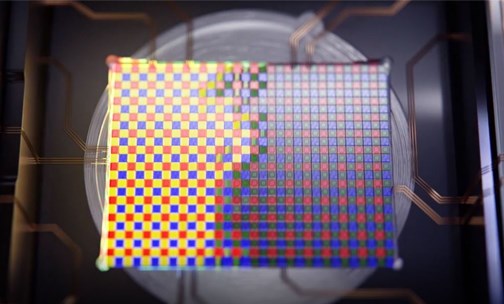 Huawei's Sensor Layout
Huawei's Sensor Layout24 March 20221776
 What is a Decoupling Capacitor?
What is a Decoupling Capacitor?23 October 202511367
 A simple guide to flow sensors and their working principle
A simple guide to flow sensors and their working principle15 July 2025586
 Intel Launches Industry's First Stackable, Shareable and Transferable One-Year Semiconductor Technician Certificate Program
Intel Launches Industry's First Stackable, Shareable and Transferable One-Year Semiconductor Technician Certificate Program26 September 20231521
 How do Inductors Work?
How do Inductors Work?27 October 202513795
STMicroelectronics
In Stock: 13775
United States
China
Canada
Japan
Russia
Germany
United Kingdom
Singapore
Italy
Hong Kong(China)
Taiwan(China)
France
Korea
Mexico
Netherlands
Malaysia
Austria
Spain
Switzerland
Poland
Thailand
Vietnam
India
United Arab Emirates
Afghanistan
Åland Islands
Albania
Algeria
American Samoa
Andorra
Angola
Anguilla
Antigua & Barbuda
Argentina
Armenia
Aruba
Australia
Azerbaijan
Bahamas
Bahrain
Bangladesh
Barbados
Belarus
Belgium
Belize
Benin
Bermuda
Bhutan
Bolivia
Bonaire, Sint Eustatius and Saba
Bosnia & Herzegovina
Botswana
Brazil
British Indian Ocean Territory
British Virgin Islands
Brunei
Bulgaria
Burkina Faso
Burundi
Cabo Verde
Cambodia
Cameroon
Cayman Islands
Central African Republic
Chad
Chile
Christmas Island
Cocos (Keeling) Islands
Colombia
Comoros
Congo
Congo (DRC)
Cook Islands
Costa Rica
Côte d’Ivoire
Croatia
Cuba
Curaçao
Cyprus
Czechia
Denmark
Djibouti
Dominica
Dominican Republic
Ecuador
Egypt
El Salvador
Equatorial Guinea
Eritrea
Estonia
Eswatini
Ethiopia
Falkland Islands
Faroe Islands
Fiji
Finland
French Guiana
French Polynesia
Gabon
Gambia
Georgia
Ghana
Gibraltar
Greece
Greenland
Grenada
Guadeloupe
Guam
Guatemala
Guernsey
Guinea
Guinea-Bissau
Guyana
Haiti
Honduras
Hungary
Iceland
Indonesia
Iran
Iraq
Ireland
Isle of Man
Israel
Jamaica
Jersey
Jordan
Kazakhstan
Kenya
Kiribati
Kosovo
Kuwait
Kyrgyzstan
Laos
Latvia
Lebanon
Lesotho
Liberia
Libya
Liechtenstein
Lithuania
Luxembourg
Macao(China)
Madagascar
Malawi
Maldives
Mali
Malta
Marshall Islands
Martinique
Mauritania
Mauritius
Mayotte
Micronesia
Moldova
Monaco
Mongolia
Montenegro
Montserrat
Morocco
Mozambique
Myanmar
Namibia
Nauru
Nepal
New Caledonia
New Zealand
Nicaragua
Niger
Nigeria
Niue
Norfolk Island
North Korea
North Macedonia
Northern Mariana Islands
Norway
Oman
Pakistan
Palau
Palestinian Authority
Panama
Papua New Guinea
Paraguay
Peru
Philippines
Pitcairn Islands
Portugal
Puerto Rico
Qatar
Réunion
Romania
Rwanda
Samoa
San Marino
São Tomé & Príncipe
Saudi Arabia
Senegal
Serbia
Seychelles
Sierra Leone
Sint Maarten
Slovakia
Slovenia
Solomon Islands
Somalia
South Africa
South Sudan
Sri Lanka
St Helena, Ascension, Tristan da Cunha
St. Barthélemy
St. Kitts & Nevis
St. Lucia
St. Martin
St. Pierre & Miquelon
St. Vincent & Grenadines
Sudan
Suriname
Svalbard & Jan Mayen
Sweden
Syria
Tajikistan
Tanzania
Timor-Leste
Togo
Tokelau
Tonga
Trinidad & Tobago
Tunisia
Turkey
Turkmenistan
Turks & Caicos Islands
Tuvalu
U.S. Outlying Islands
U.S. Virgin Islands
Uganda
Ukraine
Uruguay
Uzbekistan
Vanuatu
Vatican City
Venezuela
Wallis & Futuna
Yemen
Zambia
Zimbabwe









